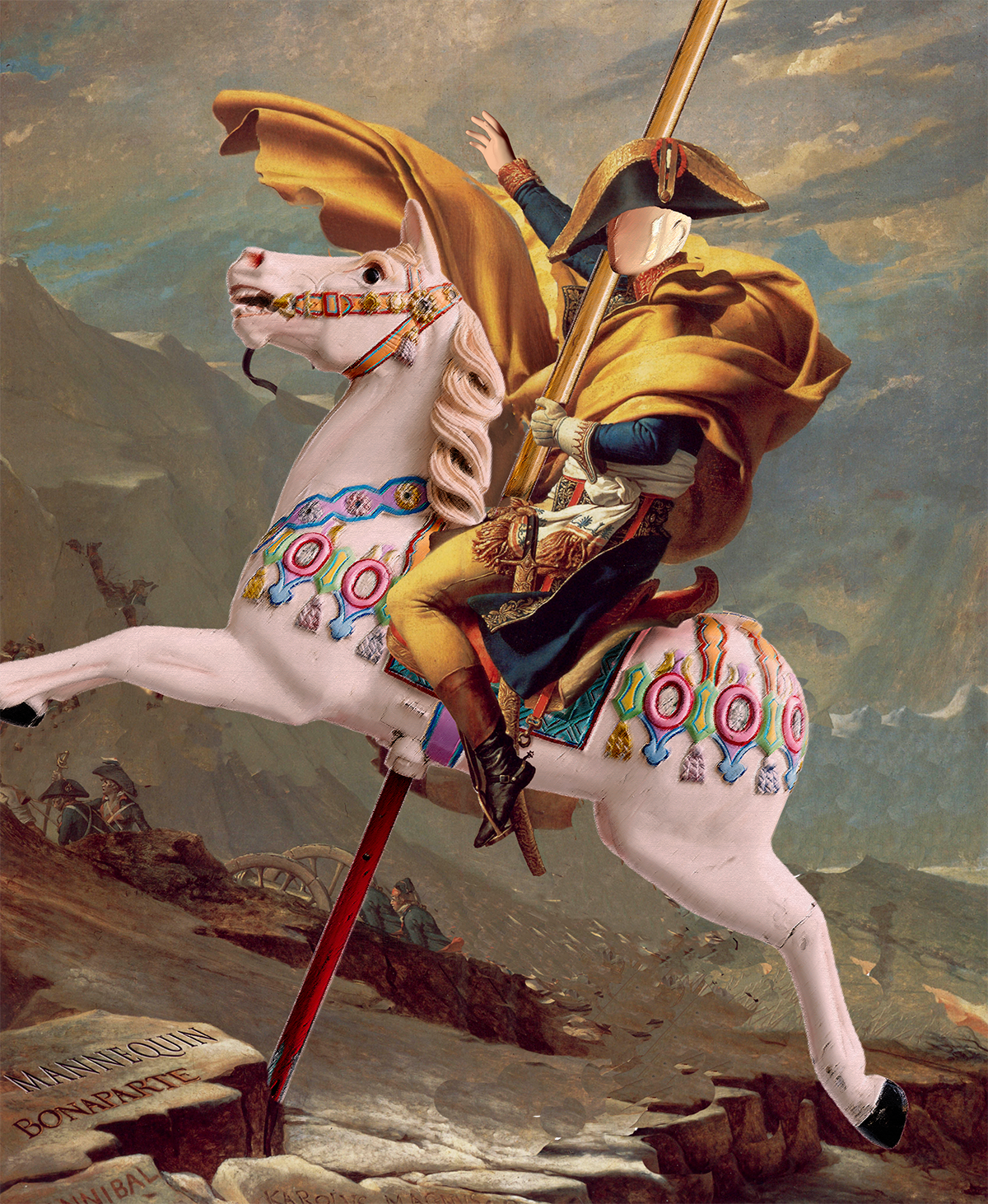This work began as a digital intervention into Napoleon Crossing the Alps by Jacques-Louis David (1801), a canonical propaganda painting of masculine heroism, national identity, and imperial spectacle. My intent was to challenge the authority of that image using the tools and language of retail display.
In this reworking, Napoleon’s steed has been replaced with a pink carousel horse ─ a static, decorative ride that spins endlessly but goes nowhere. The original composition’s drama is preserved, but its meaning is hollowed out. Napoleon’s raised arm and fluttering cloak become absurd gestures atop a fibreglass amusement. I also substituted him for a shop mannequin, further stripping him of individuality and animating him as a product rather than a person.
The word “MANNEQUIN” appears carved into the stone beneath him, just above the retained inscription “BONAPARTE.” Together, they suggest a dual identity: the historic leader and the generic model; the original and the reproduction; the man and the marketing construct.
This image is best understood through the lens of retail theatre. In imagining Napoleon as part of a department store window display, I expose how history ─ and the ideals it projects ─ can be packaged, sanitized, and sold. What once signified conquest now resembles a seasonal promotion. The carousel pole mimics a plinth, but also evokes the mechanical logic of capitalism: relentless repetition under the guise of progress.
The work draws influence from artists such as Jenny Holzer, who distorts institutional language, and Hito Steyerl, whose writing on visibility and spectacle under capitalism helped me think through the layering of entertainment and control. There are also echoes of Slim Aarons—the seductive staging of an ideal, here recontextualised into absurdity.
Ultimately, Hooray questions who history serves, and what happens when power is aestheticised, commodified, and endlessly performed.
Printed at A0 size on Hahnemühle Photo Rag 308gsm and mounted on Dibond for rigidity and clean-edge presentation. This format balances the fine art finish of the original painting with a contemporary, commercial display aesthetic ─ aligning with the work’s themes of spectacle, substitution, and retail theatre.
